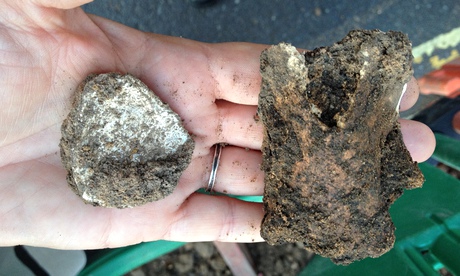Cut-marked bone (ulna) of Rock Dove specimens from Gorham’s Cave
Credit: Ruth Blasco et al., Scientific Reports
Neanderthals may have caught, butchered and cooked wild pigeons long before modern humans became regular consumers of bird meat, a study revealed on Thursday.
Close examination of 1,724 bones from rock doves, found in a cave in Gibraltar and dated to between 67,000 and 28,000 years ago, revealed cuts, human tooth marks and burns, said a paper in the journal Scientific Reports.
This suggested the doves may have been butchered and then roasted, wrote the researchers—the first evidence of hominids eating birds.
And the evidence suggested Neanderthals ate much like a latter-day Homo sapiens would tuck into a roast chicken, pulling the bones apart to get at the soft flesh
Read the rest of this article...




































